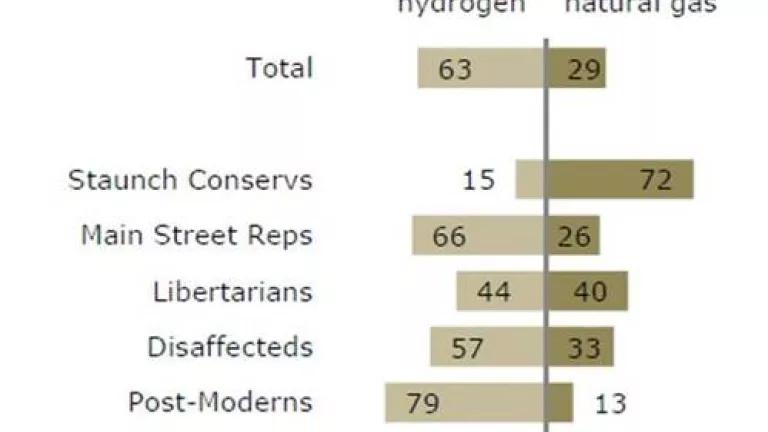
According to a huge new Pew Study, support for renewables exists across nearly all of the political spectrum. Energy and climate were one small component of the survey (which featured a large 3,000 person sample, plus 1,400 person follow-up), but Pew’s attempt to classify American voters by political leanings add a layer of nuance to this issue that is very helpful in illustrating just how broad U.S. voter support is for alternatives to fossil fuels such as wind and solar.
In the survey, the question was asked:
“Right now, which ONE of the following do you think should be the more important priority for addressing America’s energy supply?”
By more than a two to one margin, respondents supported the development of alternative sources of energy over fossil fuels. Aggregating all responses:
- 63% said “Developing alternative sources, such as wind, solar and hydrogen technology”
- 29% said “Expanding exploration and production of oil, coal and natural gas
- 6% volunteered that both should be given equal priority
- 2% didn’t know or refused to answer
What’s great about this survey however, as seen in this chart, is the ability to further breakdown these answers by political viewpoints. As background – for the full study, Pew attempted to classify where Americans are currently lining up on the political spectrum, and broke out registered voters responses on the basis of both traditional Dem/Repub categorization, but also several new categories as defined by Pew. (if I’m butchering the background here, just read the survey).
Dicing up the numbers a bit more elevates an idea that offers at least a bit of hope for renewable energy advocates - namely that, if politicians are listening to voters, they’ll hear strong support for policy solutions to develop alternative energy technologies from nearly all sections of our widening political divide.
Just to re-visualize the chart above, among all registered voters, only “Staunch Conservatives”, representing 11% of registered voters, were in favor of more fossil fuel development over alternative energy (72% to 15%) while Libertarians, at 10% of voters, were split 44% to 40%. Beyond that, there was consistent to extremely strong support from the remaining political groupings (which collectively represent 79% of registered voters), with even two thirds of “Mainstream Republicans” (14% of voters) in favor of alternative energy over fossil fuels, and heavy majorities of suport from other political viewpoints.

I’m not sure how well this chart illustrates this beyond what Pew already showed, but the goal is to show the healthy majority of voters in support of alternative energies – basically, the heavier the green shading, the more support there is for alternative energy technology (i.e. non-fossil fuel) development in that political group.
Second, I took the political classifications developed by Pew and aggregated them by “registered voter” to see the composition of the 63% of voters supporting alternative sources and the 29% who favored fossil fuels. Again, it’s easy to see that a broad cross-section of registered voters support the development of alternative energy such as wind and solar over fossil fuels.

Of course, this is only one data point, and crucially, it’s not looking at willingness to “pay” for these technologies. But as I’ve said repeatedly on this blog, there are a wide range of policies that can bolster the support of alternative energy technologies that cost the government little to nothing – be they renewable or clean energy standards, a carbon price, improved permitting and interconnection policies, or well designed loan guarantees, among many options. Additionally, voter pressure will be critical in passing future energy legislation, and these types of survey demonstrate the strong support for alternative and renewable energy that can power our new clean energy economy.